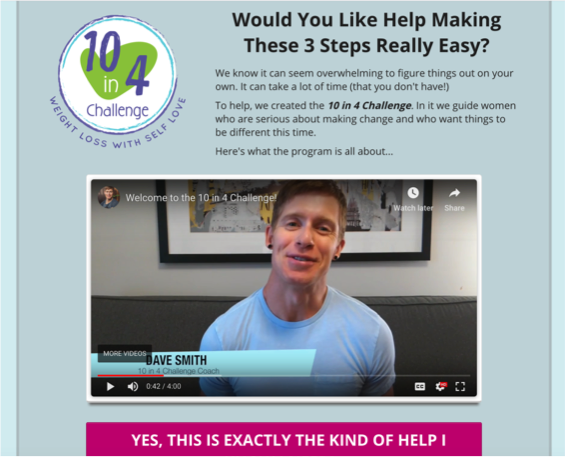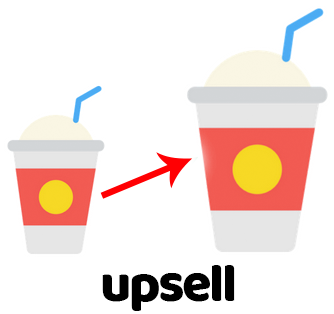 By Dave Smith, Special AFS Contributor
By Dave Smith, Special AFS Contributor
How would you feel if you found out that someone was stealing several thousands of dollars from your business each month?
Right from under your nose, you were losing $2k, $5k, maybe even $10k and you had absolutely no idea. What would your response be?
Well, if you don’t have strategic upsells and cross-sells built into your revenue stream, that’s exactly what’s happening. You’re leaving thousands of dollars on the table each and every month.
Today we’re going to fix this and make it fun along the way!
What is an Upsell?
For example, if you’ve ever ordered a medium beverage at a restaurant and been offered a large size for only $0.50 more, you’ve been upsold. Or, if you buy a new car and are convinced by the salesman to add leather interior and heated seats, that’s an upsell.
How is a Cross-sell Different?
 A cross-sell differs slightly from an upsell in that it offers a different product or service that compliments the original purchase.
A cross-sell differs slightly from an upsell in that it offers a different product or service that compliments the original purchase.
Staying with our restaurant example, if you were offered French fries to go along with you, that’s a cross-sell. Or thinking of our car example, you might have been cross-sold into an extended warranty or a package of car washes. These items accompany the purchase you’ve already made.
Now that we’ve covered the basics, let’s look at how upsell and cross-sells can help improve the bottom line of your fitness studio.
How to Master Upsells and Cross-Sells in the Fitness Industry
As a former fitness studio owner, I know how easy it can be to miss out on sales opportunities by avoiding upselling and cross-selling. I made good money selling personal training services, so that’s what I focused on.
But, when I learned how to upsell and cross-sell using the 3 following techniques, my sales increased by 266% in one year! So, which one of these strategies are you going to try first?
1. The “No-Brainer” Cross-Sell
Almost all of the clients who came to my fitness studio were looking to lose weight. Ask any of them what it takes to lose weight and they’d likely give you a similar answer:
“You need to exercise and eat healthy food.”
My clients wanted (and needed) help with their exercise AND their food choices, but I was only offering them an exercise solution. Many of them were going elsewhere for help with their nutrition. They hired dieticians or enrolled in Weight Watchers.
Why was I letting that revenue slip through my fingers?
 In response, I developed an online nutritional coaching course called The 10 In 4 Challenge. This provided two huge benefits to my business:
In response, I developed an online nutritional coaching course called The 10 In 4 Challenge. This provided two huge benefits to my business:
First, it was an easy source of additional revenue since the program was completely automated online. Neither I nor my trainers had to do any incremental work to deliver it.
And second, it dramatically improved clients’ results. Their nutrition questions were answered and their personal trainer simply acted as their accountability buddy. This led to higher client retention rates and improved referrals.
Win-win.
Your Homework: Think about your most popular product or service. What complimentary cross-sell can you offer that would be a "No Brainer" for your clients and would simultaneously increase your revenue?
2. The “VIP” One-Time Offer
In the marketing world, there is something known as a “one-time offer” (OTO). This is a special kind of upsell or cross-sell that allows new customers to add an additional item to their purchase at a special price. This special price is only available at the time of their initial purchase before it goes away forever.
OTOs are an amazing revenue-generating tool. There are two specific reasons why they work so well:
First, sales research shows that somewhere between 30-35% of customers will agree to any reasonable offer made immediately after their initial purchase. They already said, “YES!” to one offer, so they are in a positive buying mentality and will buy again.
Second, some customers simply want the best. They want to be a VIP. They have disposable income and will buy virtually anything that gives them the best product or service.
Knowing this, it becomes clear that you need to have an OTO in place if you want to maximize your revenue. Let’s look at an example:
 When clients purchase one of my online training packages, I seize the opportunity to increase my revenue. I provide even greater value to my new client by offering a DNA testing service as an OTO.
When clients purchase one of my online training packages, I seize the opportunity to increase my revenue. I provide even greater value to my new client by offering a DNA testing service as an OTO.
The results from this DNA program will help guide my client’s training and nutrition path. It will save them time and will help them see changes to their body more quickly. For me, it adds $2,000 of revenue to that initial sale.
Again, win-win.
Not everyone is going to take me up on this offer and that’s okay. It is intended for those clients who want every benefit I can offer, regardless of price. In my experience, about 1/3 of clients grab it.
Your Homework: What high-ticket OTO can you offer to new clients that will make them feel as though they are getting the very best of the best?
3. The “Proven Concept” OTO
People like to have the end in sight. Remember, they don’t want to buy personal training sessions or boot camp workouts at your studio - They want to buy a smaller waistline, a lower number on the scale, or a more defined body.
They want the result, NOT the process of getting there. You can take advantage of this by selling “transformation” packages that give new clients a specific goal that will be attained within a specific time frame.
For example, at my fitness studio, I offered programs like the “Real Inches Club,” in which new clients aimed to lose X inches in X weeks. These short programs (i.e. 2-6 weeks in most cases) provided quick, measurable results that gave clients a feeling of mastery and empowerment. They were successful.
By definition, upselling happens when a seller offers the customer additional items, upgrades, or add-ons that increase, modify or improve upon the original product or service being sold.
The business goal of these programs, however, was to get new clients excited about their success so that they would buy an OTO upsell. Specifically, I sold them into a membership program in which they would get X number of training sessions per week and would automatically be billed each month whether they used all of their sessions or not.
This type of recurring payment program is tough to sell to brand new clients. Few people like to lock into a subscription when they haven’t yet experienced the service. But, after providing “proof” through a transformation program, new clients were convinced that the service works and happily joined the membership program.
My clients gained confidence and motivation through the transformation program, while I gained recurring revenue once they bought into the “Proven Concept” upsell. Once again, it was a win-win scenario.
Your Homework: What transformational program can you offer to new customers to help them gain confidence in your services? Then, once they’ve seen proof that you can deliver results, what upsell can you offer to lock them in as long-term clients?
Conclusions
There are many ways you can make use of upsells and cross-sells at your fitness studio, but don’t feel as though you need to tackle all of them at once.
My recommendation is that you begin with the “No Brainer” cross-sell. It’s quite likely that your clients are shopping elsewhere for fitness-related products and services that you could be selling them. Choose one idea to test, then expand your upsell and cross-sell offers so that you’re not leaving any money on the table.
Dave Smith is an online health coach who was chosen as “Canada’s Top Fitness Professional” in 2013. He is the founder of the Online Trainers Federation, where he focuses on helping fitness professionals grow their brands and online businesses. Check out his business-building resources and podcast at onlinetrainersfederation.com.


 By definition,
By definition,
Join the Conversation!